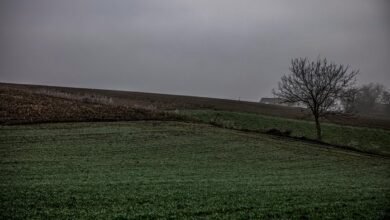The Evolution of Text-to-Image AI: From Words to Masterpieces

The evolution of text-to-image AI represents a significant shift in the intersection of language and visual arts. Initially, early systems struggled to produce coherent and relevant images from textual inputs. However, with the advent of deep learning, the fidelity and creativity of generated artwork have markedly improved. This transformation prompts critical analysis of its implications for creativity and ethical considerations, raising questions about the future relationship between human artists and advanced AI systems.
The Early Days: Pioneering Efforts in Text-to-Image Generation
The inception of text-to-image generation can be traced back to a confluence of linguistic and visual computing advancements in the late 20th century.
Early pioneers explored text synthesis algorithms, enabling machines to interpret and visualize textual descriptions.
These foundational efforts laid the groundwork for image generation techniques, merging language processing with graphical representation, thus setting the stage for future innovations in automated visual creativity.
See also: The Ethical Concerns of AI-Generated Content
Advancements in AI Technology: The Rise of Deep Learning
As advancements in AI technology gained momentum, deep learning emerged as a transformative force in the field of text-to-image generation.
Central to this evolution are neural networks, which enable more sophisticated interpretations of textual input. Performance metrics have shown significant improvements, demonstrating enhanced image quality and coherence.
This technological leap has reshaped the landscape, offering unprecedented creative possibilities in visual content generation.
Creative Applications: Transforming Art and Design
Text-to-image AI has catalyzed significant transformations within the realms of art and design, enabling creators to explore new creative horizons.
This technology fosters artistic collaboration by allowing designers to merge their visions with AI-generated imagery, resulting in unprecedented design innovation.
As artists leverage this tool, the boundaries of traditional practices blur, leading to unique expressions and a redefined creative landscape.
Ethical Considerations and Future Directions
While advancements in text-to-image AI present remarkable opportunities for artistic innovation, they also raise critical ethical considerations that warrant careful examination.
Key issues include bias mitigation in generated content, potential copyright issues surrounding the use of existing artworks, the necessity of user consent, and the complexities of creative ownership.
Addressing these challenges is essential for fostering a responsible future in AI-driven artistry.
Conclusion
In conclusion, the journey of text-to-image AI represents a remarkable odyssey of innovation, wherein the harmonious interplay of linguistic and visual elements has birthed an era of unprecedented creative possibilities. As this technology continues to mature, it invites both artists and technologists to navigate the nuanced landscape of artistic integrity and ethical responsibility. Ultimately, the evolution of this medium heralds a promising future, where human imagination and machine intelligence coexist in a delicate yet dynamic synergy.




